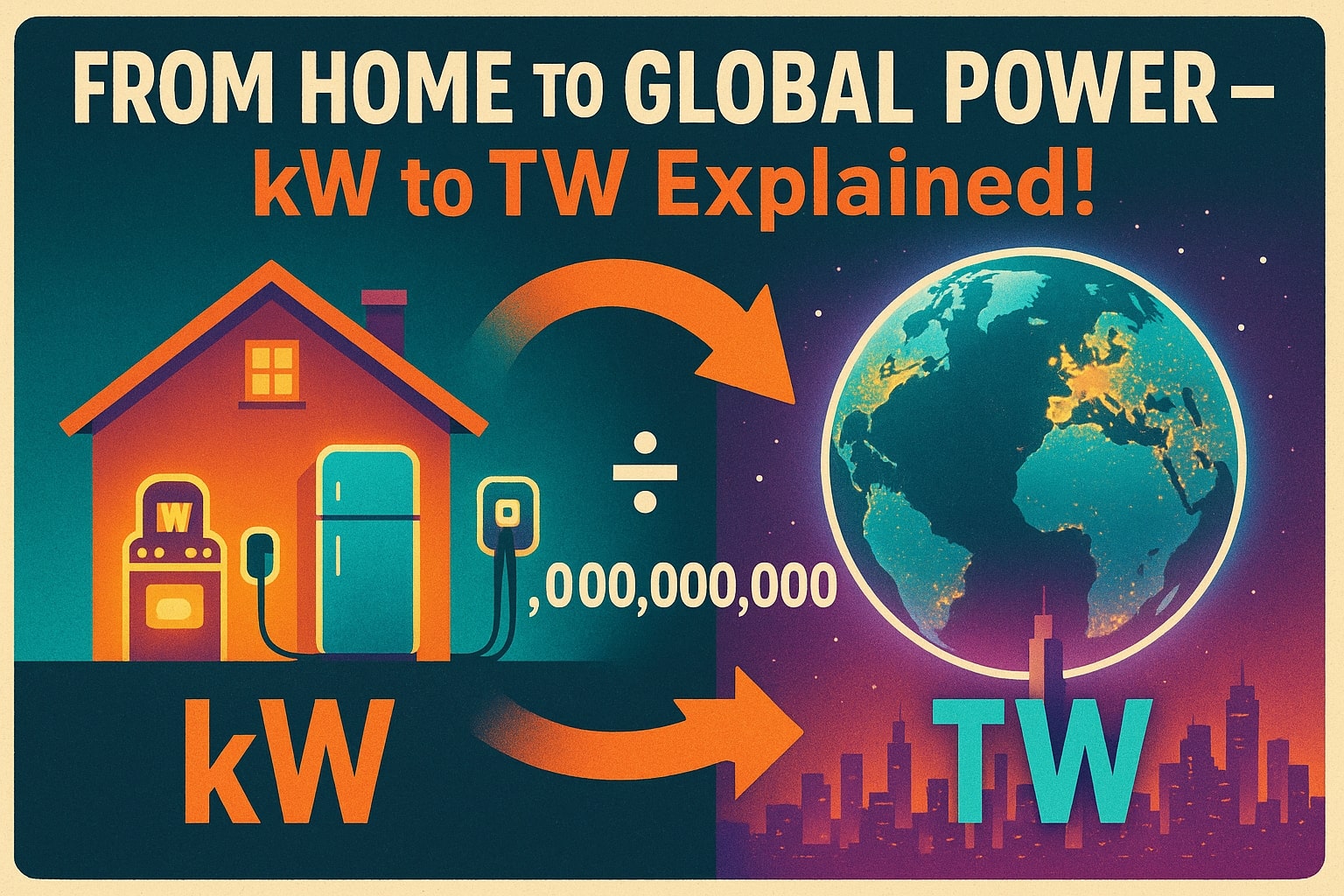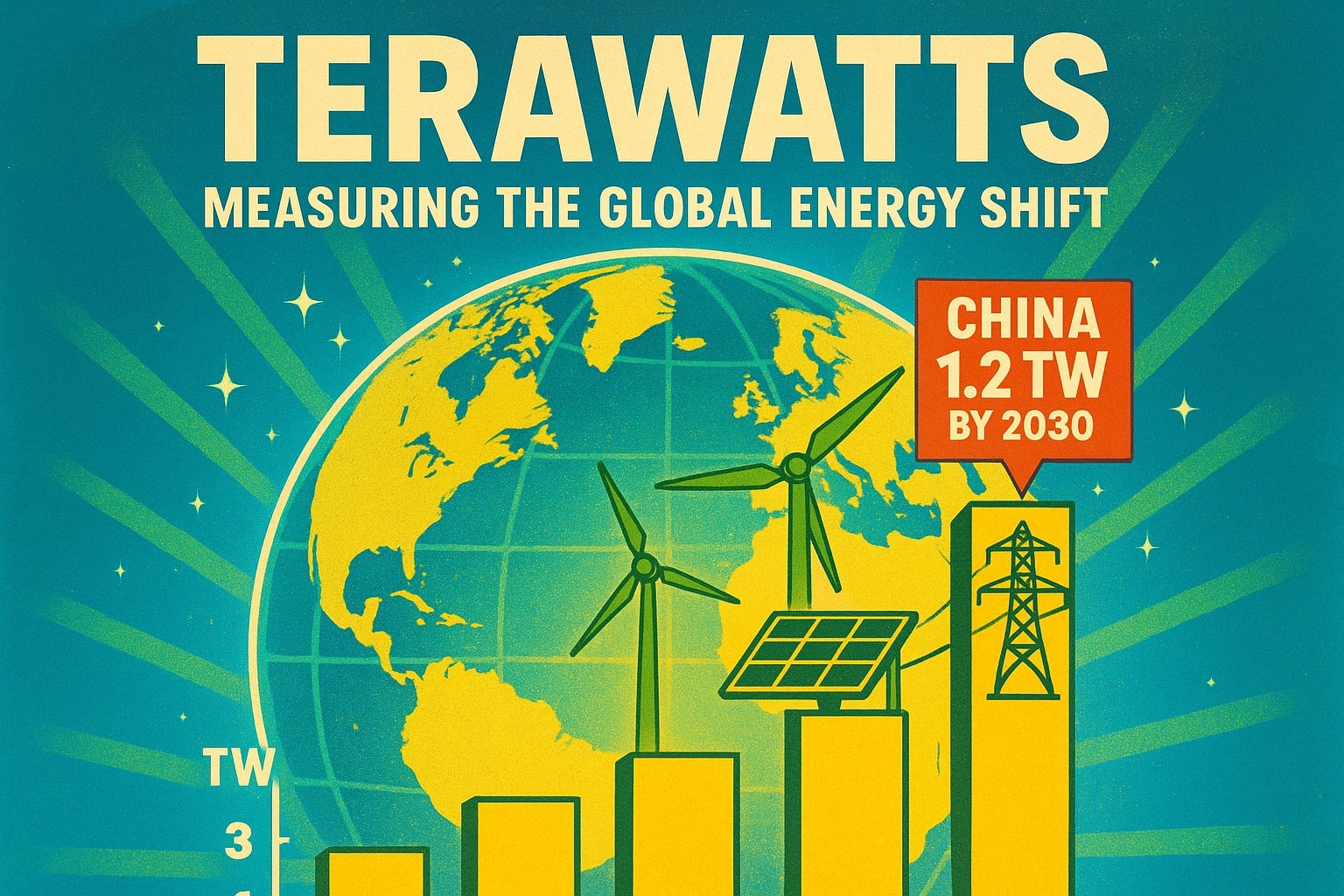Kilowatt to Terawatt – How to convert kW to TW
Need to convert kilowatt to terawatt? These two units measure power on completely different scales. A kilowatt is what powers your home appliances, while a terawatt measures the energy capacity of entire nations or the global power grid. They’re separated by a factor of a trillion, but converting between them is easy thanks to the metric system. Here’s how to do the math, where these units show up in practice, and why the terawatt has become a benchmark for understanding global energy demand.

What is a kilowatt (kW)?
A kilowatt equals 1,000 watts (1 × 10³ W) and is one of the most common units for measuring power in everyday life. Residential electricity bills often quote energy usage in kilowatt-hours (kWh), which reflect how many kilowatts are consumed over time.
A typical household oven might draw around 2–3 kW, while a small electric car charger may use 7–11 kW. Businesses and factories often work in multiples of kilowatts to track their power use before scaling up to megawatts.
What is a terawatt (TW)?
A terawatt is a massive unit of power, equal to 1 trillion watts (1 × 10¹² W) or 1 billion kilowatts. It’s used to measure enormous energy outputs, such as global electricity production, continental grids, and the total power demand of entire countries.
For perspective, the world’s total electricity demand averages around 18–20 TW at any given moment, according to data from the International Energy Agency (IEA).
How to convert kilowatt to terawatt
The metric relationship is straightforward:
1 terawatt = 1,000,000,000 kilowatts (1 TW = 10⁹ kW)
To convert:
Terawatts (TW) = Kilowatts (kW) ÷ 1,000,000,000
Example: If a regional grid generates 3,200,000,000 kW of power:
3,200,000,000 ÷ 1,000,000,000 = 3.2 TW
Want the answer instantly? Use our Power Converter or check out other Conversion tools for quick results.
Did you know?
-
Global scale: The Earth’s population consumes about 175,000 terawatt-hours (TWh) of electricity annually, equivalent to an average power use of around 20 TW at any given time.
-
Renewable milestones: In 2023, the world’s installed solar capacity passed 1 TW, a milestone tracked by the International Renewable Energy Agency (IRENA).
-
Natural forces: A large hurricane can release heat energy equivalent to roughly 600 TW — though this energy is spread over vast areas and isn’t harnessed as electricity.
-
Fictional fame: The term “terawatt” often appears in science fiction as shorthand for colossal energy sources, from futuristic power grids to interstellar engines.
How the Terawatt Became an Energy Benchmark
In the last two decades, the terawatt has become the go-to unit for understanding global energy transitions. According to reports from the IEA and Bloomberg New Energy Finance, governments and industry leaders now track renewable growth and grid capacity in terawatts to simplify communication and highlight the scale of progress.
For instance, when China announced plans in 2022 to build 1.2 TW of wind and solar capacity by 2030, the target showed just how massive its commitment was without drowning readers in billions of kilowatts. Framing energy goals in terawatts helps policymakers, investors, and the public see the true magnitude of the shift toward sustainable energy.

Wrapping Up the Numbers
Converting kilowatt to terawatt is simply dividing by a billion, but understanding this scale shows the vast jump from household electricity to the output of nations and the world. Terawatts capture the big picture, while kilowatts keep energy use tangible at the personal and industrial level.
For quick and reliable calculations, try our Power Converter or explore other Conversion tools to make any power conversion seamless.

